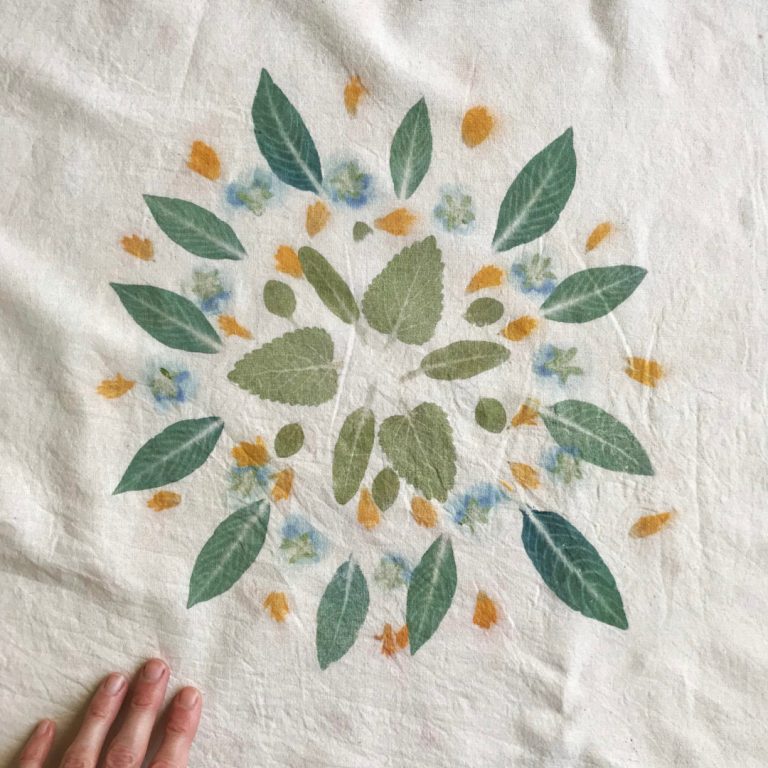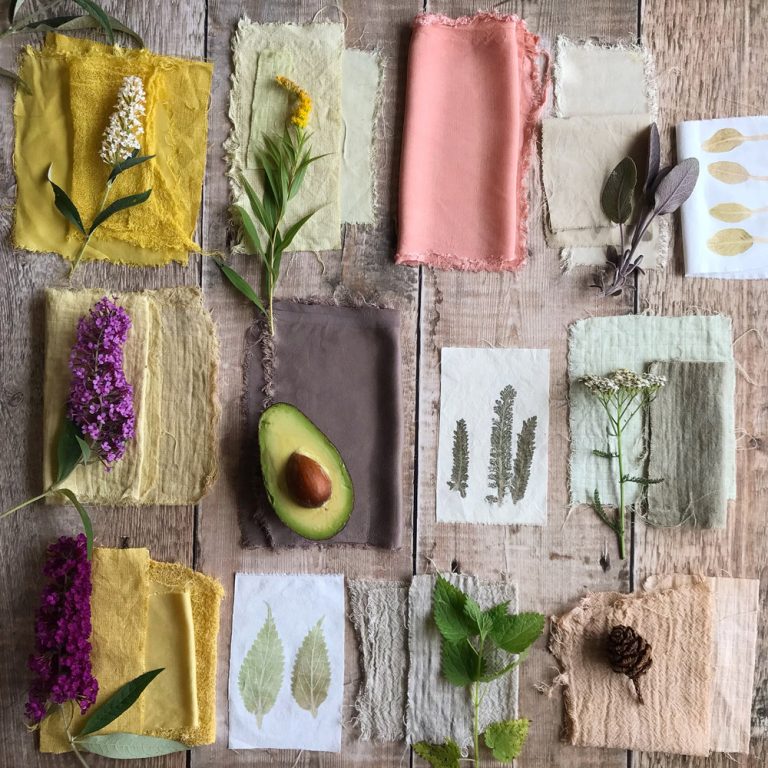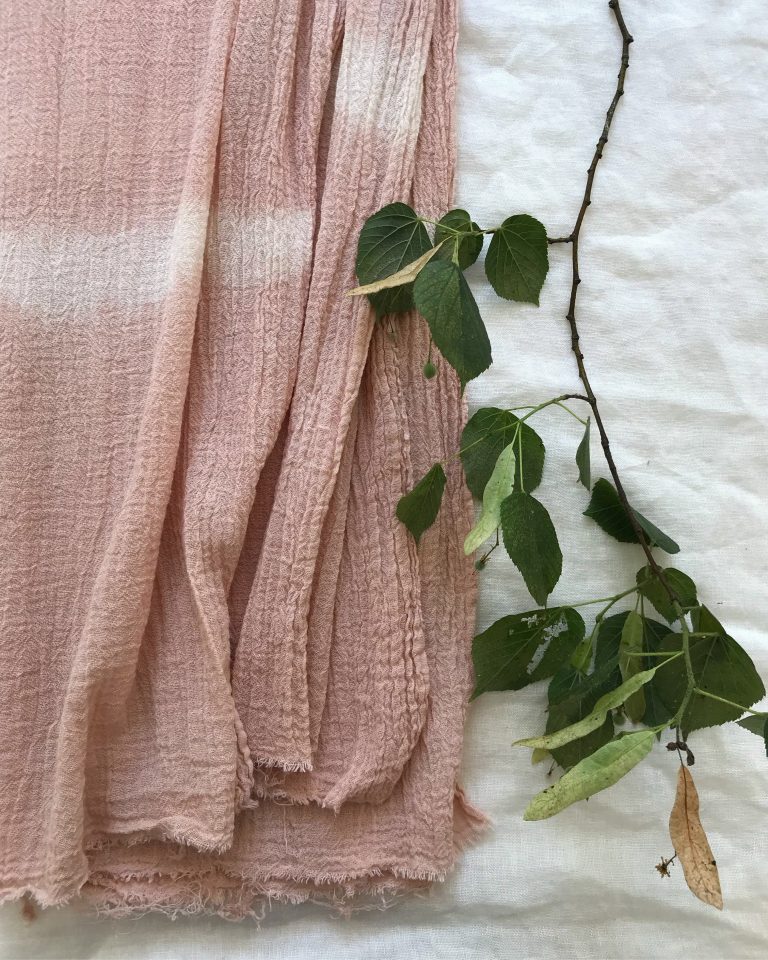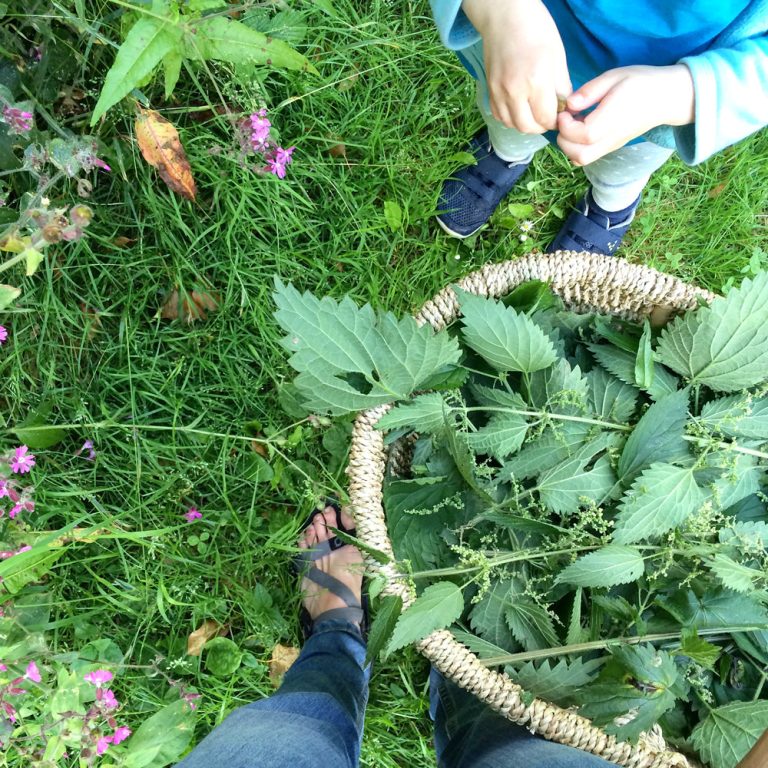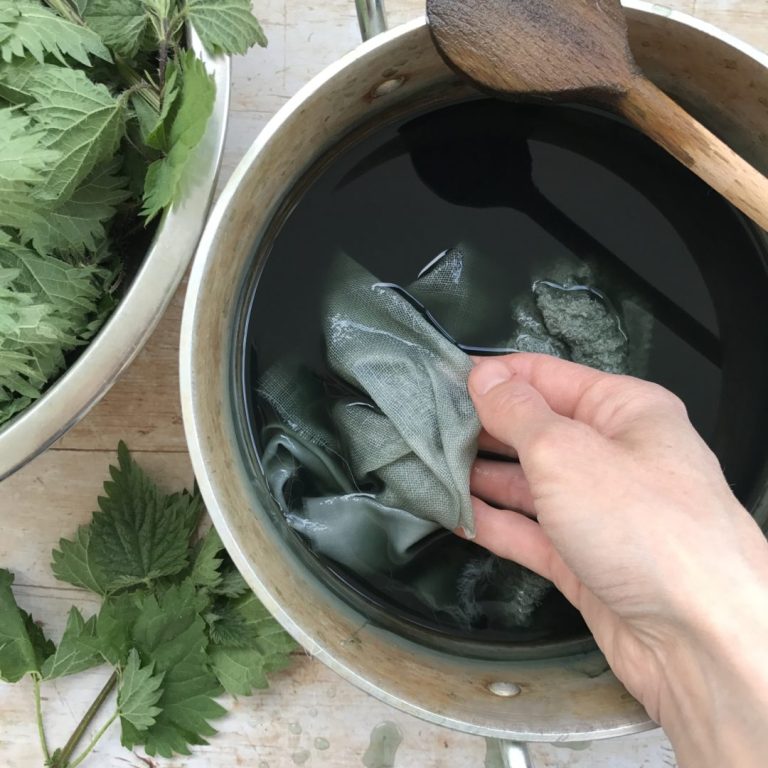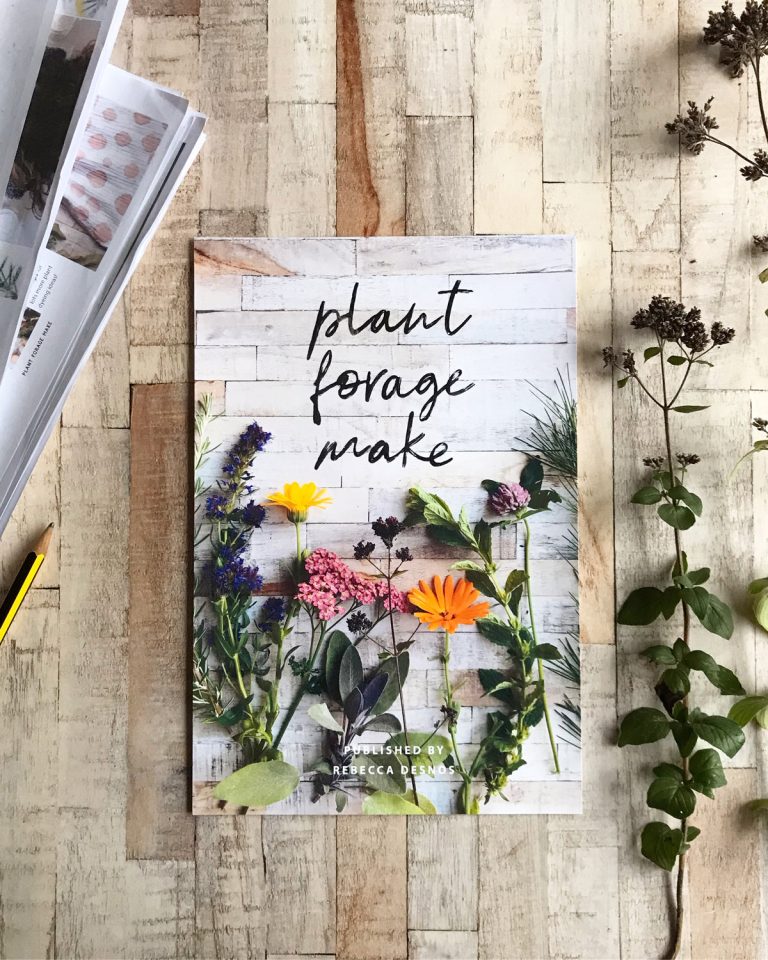I’m delighted to introduce the first in a series of interviews called THE NATURE CREATIVE.
The first guest is Rebecca Fisher who is the maker at Nurturing Soul — a line of natural soap and botanical care products hand crafted in Scotland.
Rebecca uses botanicals to colour her soap and as you can imagine there lots of things I’d like to chat to her about. The cross over between dyeing cloth with plants and using botanicals as colorants in cosmetics is so exciting! For example, the red in the soap below was made with madder which is a traditional textile dye. It’s incredible!

Please join me in welcoming Rebecca Fisher from Nurturing Soul!
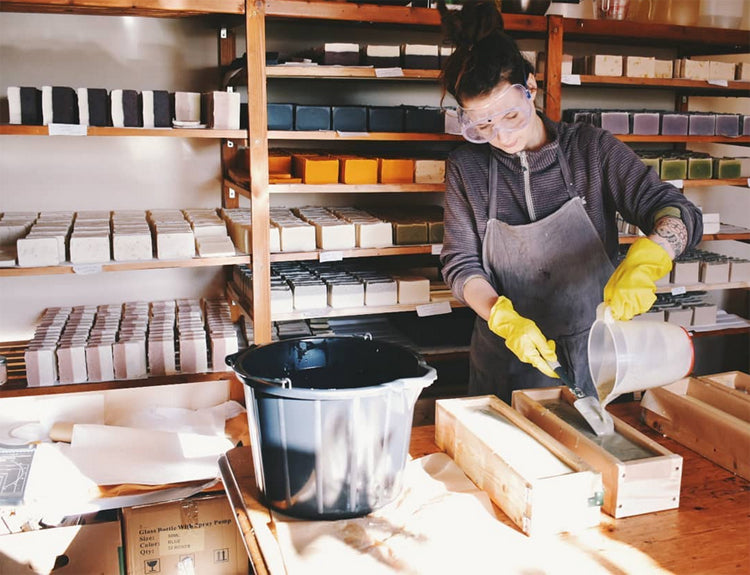
RD (Rebecca Desnos): Hi Bec. It’s lovely chatting to you. As you know, I love your soap so much — particularly the coloured varieties. Can you tell us a little bit about your process? When you create colourants from botanicals, do you infuse the plants into oil or do you grind them into a powder and stir in?
RF (Rebecca Fisher): I use a few different methods depending on the shade of colour I’d like to obtain and which botanicals I’m working with. Some plants work better and extract a more vibrant colour by being infused in the base oils first, whereas others work better in powder form by adding them to the soap mixture before pouring it into the moulds. Another method we sometimes use is to add botanicals to our lye water. This method works well for powdered herbs or clays and it’s also a useful technique for when you don’t want your soap to have a speckled design, which generally happens when you add powder directly to the soap mixture.
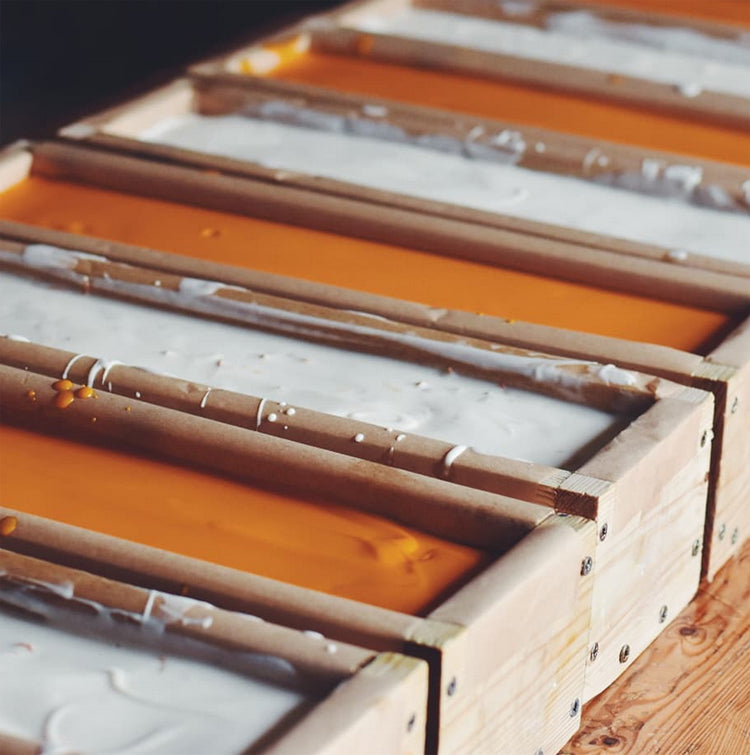
RD: What are some of your favourite plants for creating colour?
RF: There are so many amazing plants which create natural colourants and so many I’d still like to experiment with, but my favourites so far are nettles and alfalfa for greens, I also love using spirulina to obtain green colours (this is what we use to colour our pine tea soap with) annatto seeds for vibrant oranges (pictured above), madder root for deep pink and reds and alkanet root for delicate lilac/purple hues (shown below).
RD: Which oils do you like working with the most? Does the choice of oil affect the final colour?
RF: Yes, the colour of your base oils will affect your final colours, so I use carrier oils which are lighter in colour — for example coconut oil and light coloured olive oil (rather than extra virgin) work well when extracting colours from plants.
RD: Do botanical colours mature in the soap over time?
RF: Yes, some botanicals do have tendency to change colour over time, usually they lighten rather than get darker as they cure. Though we have one soap (lemongrass and ginger) which develops a lovely warm peach colour as it cures due to the pure ginger essential oil it’s scented with.
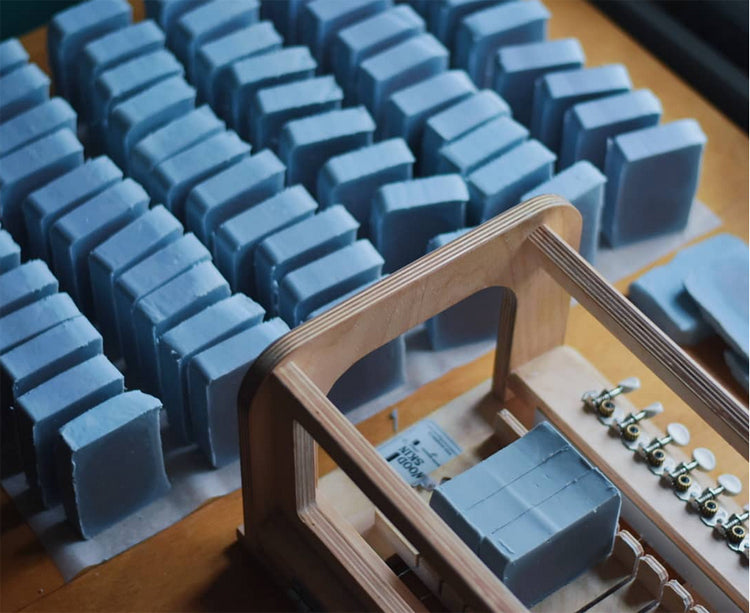
RD: Have you had any surprises whilst experimenting?
RF: Alkanet root always surprises me! (pictured above) I find the colour can vary significantly depending on various factors, like how long you infuse it for, what temperature you soap at and whether you insulate the soap whilst in the mould. It goes through so many colour changes during saponification until it’s fully cured and it always keeps me on my toes!
RD: Do some botanical colourants have a dual purpose in that they give beautiful colour and also have therapeutic properties for our skin?
RF: Yes, and that’s one of the things I love about using botanicals for natural colourants. Not only do you gain beautiful colours but also the plant’s therapeutic actions too. We have a nettle and rosemary shampoo and body bar where we use nettle powder to colour the soap and infuse dried nettle and rosemary into our base oils to extract the plants’ skin nourishing properties too.

RD: You also add clay to your soap to make colours. My favourite is the beautifully delicate rose pink clay you use! Does clay have the added benefit of being good for our skin too?
RF: Yes, clays have been shown to have a very balancing and detoxifying effect on the skin’s sebum. They help purify, offer gentle exfoliation and help to absorb excess oil.
RD: Each of your recipes needs to be checked and approved before you can sell the soap. Are there particular approved plants, clays and other ingredients that you can use in soap? How does this work?
RF: Every cosmetic product produced within the UK and EU requires a cosmetic product safety report before they can be sold to the general public. This is where your formulations are checked and certified to be safe for use. There is an extensive range of botanicals and clays which can be used in the cosmetic industry, but every formulation is always certified on an individual basis and there is always a limit to how much of a certain plant or clay you can use in each formulation.
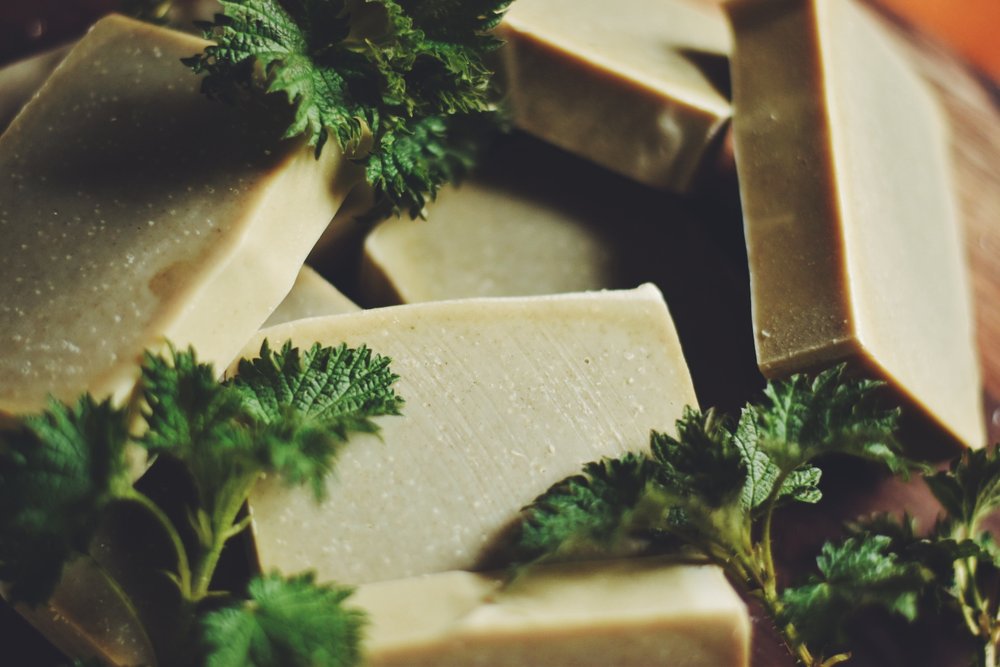
RD: Last but not least, can you tell us what your current favourite bar of soap that you make?
RF: That’s a hard question to answer as I love them all! But probably our nettle and rosemary shampoo and body bar is my favourite (pictured above). I have a deep love for nettle and how nourishing she is for our skin and body, so I always find myself reaching for this soap first.
I really love nettles too and agree that the shampoo bar is gorgeous. Thanks for the lovely chat, Bec! Your process is both beautiful and fascinating.
- Follow Nurturing Soul on Instagram.
- Visit Nurturing Soul’s website.
- All photos (with the exception of the magazine photo) are by Nurturing Soul and reposted with permisson.

